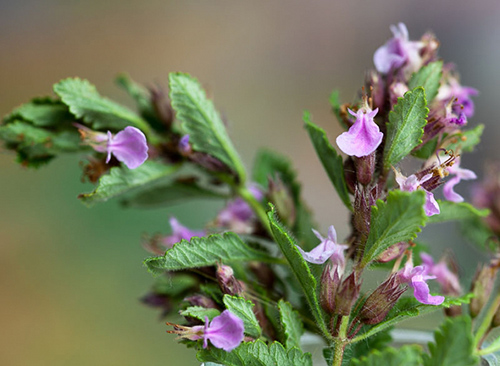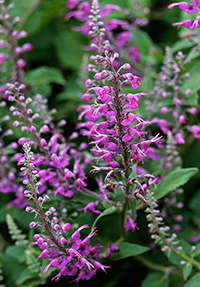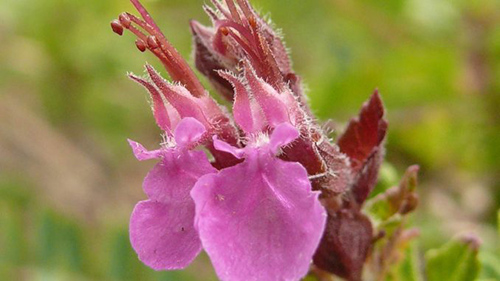Contents
The germander plant is one of many that grow in rocky soils and old walls, adorning them with its soft purple color. Its scientific name comes from Teucrium, a Trojan prince. Many virtues, such as healing gout, were attributed to this plant in ancient times.

The physicians of Charles I, King of Spain, prescribed him germander, but it was unsuccessful. After this incident, the prestige as a panacea declined until the present.
Germander Plant Scientific Facts
- Other names: Wall germander.
- French: Germandree.
- Spanish: Camedrio.
- Environment: European calcareous rocky soils. It has been introduced to America but is not well known.
- Description: The plant of the Labiatae family grows from 10 to 30 cm high. Its stem and the underside of its leaves are hairy. Its flowers are purple and grow along the stem.
- Parts of the plant used medicinally: The flowers and leaves.
Healing Properties and Indications

Germander contains essential oil, tannin, and bitter components. Like all bitters, it stimulates digestion and has cholagogue properties that help to empty the gall bladder. It is used as an appetizer and a stomach tonic. Moreover, it helps eliminate flatulence (excess gas in the digestive tract).
Germander Liquor
Germander is also used in alcohol cold extract (liquors and appetizer wines). However, we do not recommend its use since the evident adverse effects of alcohol overcome the plants.

Marum Germander
Marum germander, also called cat thyme, belongs to the same botanical genus as germander, which it resembles in composition and properties. Though native to Europe, it has been naturalized to warm Central American areas.
It is a digestive and invigorator for asthenia, low blood pressure, and fainting. Its infusion is prepared with 10-15g of plant per liter of water. Drink up to five cups daily.
DISCLAIMER: All content on this website is presented solely for educational and informational objectives. It would be best to not rely on the information provided as a replacement for advice, diagnosis, or treatment from a qualified medical expert. If you are pregnant, nursing, or have any preexisting medical concerns, you should talk to your doctor before using any herbal or natural medicines.
REFERENCES
- George D. Pamplona-Roger, M.D. “Encyclopedia of Medicinal Plants.” George D. Pamplona-Roger, M.D. Encyclopedia of Medicinal Plants. Ed. Francesc X. Gelabert. vols. 2 San Fernando de Henares: Editorial Safeliz, 2000. 473. Print. [germander plant]
- Blumenthal, M., Goldberg, A., & Brinckmann, J. (Eds.). (2000). Herbal Medicine: Expanded Commission E Monographs. American Botanical Council.
- Braun, L., & Cohen, M. (2015). Herbs and Natural Supplements, Volume 2: An Evidence-Based Guide. Elsevier Health Sciences.
- Grieve, M. (1971). A Modern Herbal: The Medicinal, Culinary, Cosmetic and Economic Properties, Cultivation and Folk-Lore of Herbs, Grasses, Fungi, Shrubs, & Trees with All Their Modern Scientific Uses. Dover Publications.
- Heinrich, M., Barnes, J., Gibbons, S., & Williamson, E. (Eds.). (2012). Fundamentals of Pharmacognosy and Phytotherapy (2nd ed.). Churchill Livingstone.
- Mills, S., & Bone, K. (2000). Principles and Practice of Phytotherapy: Modern Herbal Medicine. Churchill Livingstone.
